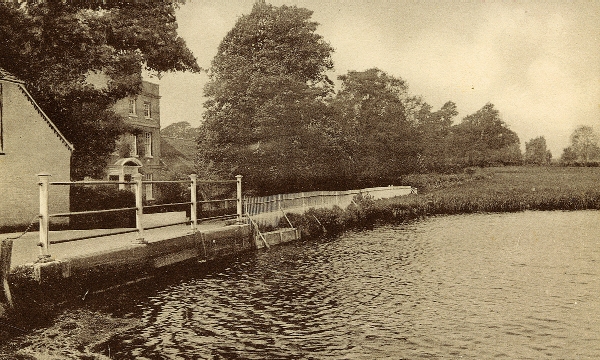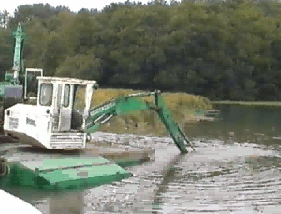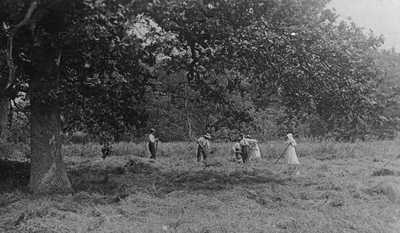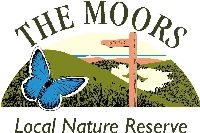HUMAN GEOGRAPHY
|
|
The many springs at The Moors that feed into the millpond
have been utilised in the past by man for the production of watercress.
The larger springs were converted into shallow ponds for growing watercress
as a commercial crop. The chalk streams of Hampshire are well suited to
growing cress as the water is at a constant temperature of about 10 °C
and is always flowing. Consequently the cress beds never freeze in cold
winters. The commercial growing of watercress along Hampshire chalk streams
still occurs today in the Meon, Itchen and Test valleys. At the Moors
watercress production is thought to have stopped by about the 1940s. The
1910 Ordnance Survey Map shows five cress beds. The photograph is of Mr
Pepler managing cress beds on the Moors in the 1920s (photograph provided
by local historian John Bosworth). Click on the map below to find
Mr Pepler in the watercress beds.
|
|
|
Earlier this century when Waltham Chase Mill was in operation, the millpond
was much larger and was maintained by the miller and his staff. The picture
below is of the millpond in the early 1900s taken from an old postcard.
 |

|
The sedge, and other marginal and aquatic plants
would be regularly cut by hand from a punt to help prevent the pond from
silting up. Since the closure of the mill in the 1950s, this practice has
stopped and as a consequence the pond has become much-reduced in size and
very shallow. In the summer of 2000 the pond was cleaned out using specialist
equipment including a floating excavator.
|
 Many
more people worked on the land in the early part of the 1900s than today,
with farms employing many seasonal workers. The picture below was taken
of farm workers making hay in the millpond meadow in about 1910. Photograph
provided by John Bosworth. Many
more people worked on the land in the early part of the 1900s than today,
with farms employing many seasonal workers. The picture below was taken
of farm workers making hay in the millpond meadow in about 1910. Photograph
provided by John Bosworth. |

